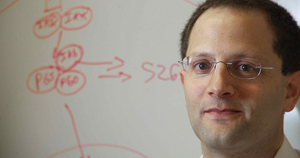Engaging Youth to Sustain the Longevity of the Olympics: Q&A With Professor Jeeyoon Kim
The 2024 Paris Olympics is almost underway. The glory for the world-class athletes and the excitement for the spectators make for a riveting Games—crucial for the success of these Olympics and, more importantly, for the longevity of the Games. That…


 Exercise has been shown to help control weight, improve mood and reduce the risk of certain diseases. Stefan Keslacy, assistant professor of exercise science in the School of Education, is taking the research further with one specific disease—looking at whether exercise can stem the debilitating symptoms of Alzheimer’s disease and pinpointing a treatment that would mimic those effects.
Exercise has been shown to help control weight, improve mood and reduce the risk of certain diseases. Stefan Keslacy, assistant professor of exercise science in the School of Education, is taking the research further with one specific disease—looking at whether exercise can stem the debilitating symptoms of Alzheimer’s disease and pinpointing a treatment that would mimic those effects.